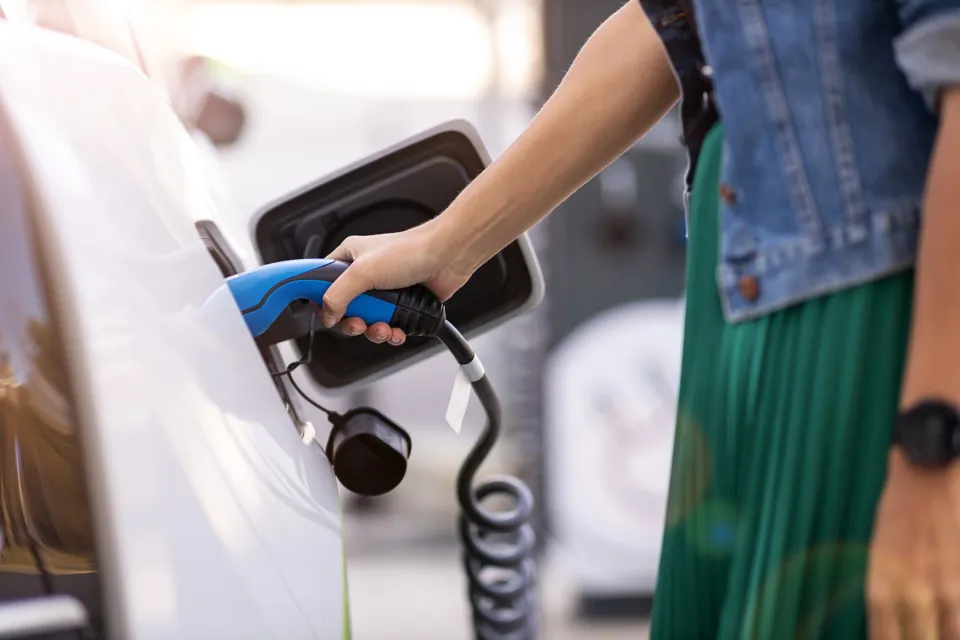The vast majority of business journeys cost more per mile than the HMRC advisory electricity rate (AER) reimbursed drivers before the March increase, new analysis suggests.
HMRC published new Advisory Fuel Rates (AFRs) for company car drivers claiming back fuel costs from their employer in March, which included a 1 pence per mile (ppm) increase in the AER used to reimburse drivers of electric company cars.
It had previously increased the AER from 5ppm to 8ppm from December 1, 2022, when it last reviewed its mileage rates.
However, new analysis from Mina, based on more than 125,000 charges in the three months to February, showed that at 8ppm the AER still lagged behind the real outlay for most business journeys.
The average cost of home charging increased by 1p in the last quarter, to 31p per kWh, while public charging tariffs increased by 4p, to 74p per kWh.
As a consequence, Mina says that the average pence per mile cost for driving an electric car stayed flat at 9ppm, while the average cost for an electric van rose 1p, to 14p, compared to autumn last year.
“The cap on domestic electricity has certainly helped stabilise prices for home charging,” Mina’s CEO Ashely Tate said. “But businesses such as charge point operators, who are not subject to the cap, have also seen prices levelling out. And while we’d like to see these costs coming down over the summer months, at least companies running electric vehicles can at last plan costs with more certainty than before.
“In fact, our research in the report shows that electric cars and vans are still on the whole extremely cost effective when compared to petrol and diesel – even though the cost of fuel has reduced in the past few months.”
The latest EV report from Mina also contains data on home charging habits. It shows when drivers plug in, when they charge, the amount of power they need, and also gives insights into how the domestic grid will cope as the number of EVs grows.
Tate explained: “We’re able to track exactly when drivers plug in at home and measure their consumption too. So we’re able to understand demand really accurately, and when you overlay factors such as behaviour and need against grid capacity, a really clear, and very positive, picture emerges about the future of domestic charging.”
Mina found that while the amount a driver can claim has increased, the single figure for such a complex area of driving costs is still not suitable.
It found that by using the AER for one in five charges the business is paying too much, while for four in five charges the driver is out of pocket
Tate continued: “Although the AER has been revised in the hope it will more accurately reflect drivers’ charging costs, and as our data shows, it aligns with a few more journeys than before - albeit still a small percentage.
“The problem is it will never be fair, and now more businesses are losing out if they use it. No matter how much effort goes into producing this single figure, somebody, somewhere is usually on the wrong end of it.”
Mina’s latest EV report, which also includes analysis of how the winter months affected the range and cost of electric cars and vans, can be downloaded here.
AFP creates EV mileage cost calculator
Mina’s analysis comes as the Association of Fleet Professionals (AFP) has created a new EV mileage cost calculator to help with the accurate reimbursement of company car drivers.
It shows potential pence per mile costs for more than 70 models, comparing a variety of home and public charging tariffs in a variety of weather conditions against the current AER.
Paul Hollick, chair at the AFP, said: “This answers a very real need from fleets for information about real world EV charging cost performance, given the variance that exists between what is being paid for electricity and how efficiency changes at different temperatures.
“We expect members to choose to use the information in several ways. The first is simply to look at the mileage costs of different EVs and use the figures to inform future decision making, especially which models should be included on choice lists.
“Secondly, it should also support arguments to encourage more home charging and less use of public facilities, showing just how much this impacts on costs on a per vehicle basis.
“Finally, and perhaps most importantly, it will help to enable more accurate reimbursement of drivers for charging.
"While the increased 9ppm AER rate is an improvement, the calculator does show conclusively how it easy it is for this figure to be exceeded in any number of circumstances.
"We already have several AFP members who are paying substantially more that AER in order to reimburse employees fairly.”
























TimI - 26/04/2023 11:31
Why would users not have an EV tariff and pay less than 10p/kWh?